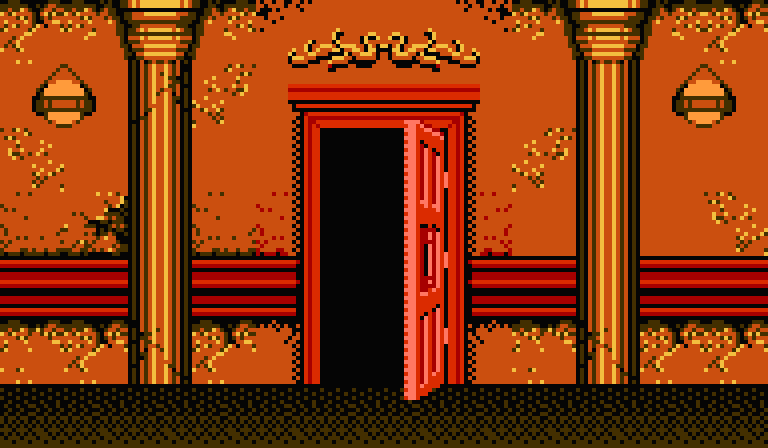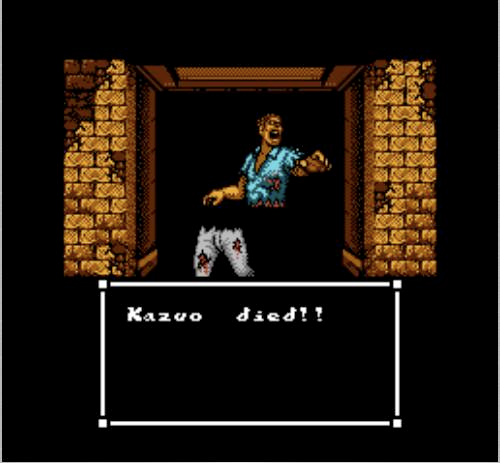In the third installment of my segment, I'll be talking about an obscure Japanese horror game that was developed by Capcom and released for the Famicom in 1989.
Sweet Home, based on the film of the same name, is an RPG developed by Capcom sprinkled with adventure and puzzle game themes. It was the inspiration for Capcom's later franchise, Resident Evil, but never saw an official Western release.
Warning -- spoilers imminent, so please proceed at your own risk.
The story of the game follows the film's: five people (from left to right: Kazuo, Akiko, Taguchi, Asuka and Emi) venture into the abandoned mansion of famed artist Mamiya Ichirou, intent on filming a documentary while trying to restore Mamiya's works. Upon entering the mansion, the group discovers that the ghost of Lady Mamiya, Ichirou's wife, haunts the place and she does not intend to let the intruders escape with their lives. The crew must try to find a way out of the haunted mansion alive — and lay Lady Mamiya to rest once and for all in the process.
Players are soon bombarded by horrible zombie-like monsters that, freakishly enough, you find out were formally other people who ventured in the mansion and didn't make it out alive. As you explore, there are items called frescos (a type of mural painting) left behind by Ichirou that piece together the tragic story of Lady Mamiya.
Exploration itself is the usual overhead view with tile-based movement; the unique feature, however, is the greater emphasis on puzzle solving and exploration than actual battles. Party members are far more likely to die exploring than against enemies, due to the large amount of traps placed all over the mansion (including a few instant death ones).
Each of the five party members can equip a weapon and two regular items. They also possess a special item unique to only them: Kazuo, the leader of the group can use a Lighter that causes fire damage and burns flammable objects while exploring; Asuka uses a Vacuum to clean dirty frescos and remove glass shard hazards from the floor; Akiko is the nurse and her handy Medkit cures characters of various status ailments; Taguchi wields a camera that damages ghosts and bats in battle and reveals the contents of frescos that Asuka cleans; Emi, as the "Master of Lock-Picking," can use her key to unlock any locked door.
In battle, characters can choose one of several commands including Attack, Items, Pray, Tool, Run and Call. Call allows you to get a character not in your party to navigate the mansion and join in, since you can only have three party members maximum. This balancing of characters for different tasks becomes another important aspect of the game.
Pray is a special command that deals damage based on how many Prayer Points you use. An item called a Tonic restores these points but they're very limited in supply, so proper consumption of those points are key.
What makes this game so nail-bitingly difficult is the fact that when a party member falls in battle, they die for good. No magic spells or Phoenix Down here -- they die a horrifying death and that's it. Sweet Home even shows players a lovely little scene to drive home that fact. If Kazuo or Taguchi dies, you see this:
And this is the screen shown for Asuka, Akiko or Emi if they die:
Even neater, there are five unique endings depending on how many characters survive till the end of the game, which is pretty amazing for a game on the Famicom.
This game pulls no punches in the character deaths, the story, gameplay or visuals. Sweet Home's an incredibly forward title that completely masters the genre it essentially created through its use of atmosphere, well-paced and suspenseful story-telling and team-based gaming mechanics. I highly recommend any video game horror fan to check out Sweet Home for themselves -- it's a masterpiece that can't be missed.
You can download the excellent and professionally done fan translation here, and here is where you can learn about the gameplay mechanics.


